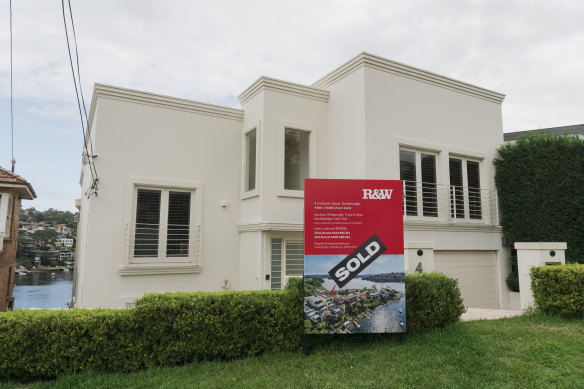Property prices are tipped to rise in 2024 despite a likely fresh interest rate increase next week, as demand for housing outstrips supply.
Major bank economists predict the Reserve Bank will lift the cash rate by a quarter of a percentage point on Melbourne Cup Day to tame higher than expected inflation.
It follows news that dwelling values have continued to rise – up nationally by 7.6 per cent so far in 2023, on CoreLogic figures, and the research group predicts that values could reach a record high by mid-November.
While a new national record could be reached in the next two weeks, it may be broken again in 2024, as economists predict house prices to rise between 3 and 5 per cent over the year.
Economists had earlier predicted price falls of about 15 to 20 per cent, but last year’s downturn proved shorter than expected – and since the market turned around early this year, values have been going up again.
CBA is predicting 5 per cent growth across Australia in 2024, with Sydney’s house prices to rise by 4 per cent, and Melbourne’s by 5 per cent.
CBA’s head of Australian economics Gareth Aird said he expected Melbourne’s house prices to rise by slightly more, as they had not risen by as much as Sydney’s this year.
The rate rise in November, if it goes ahead, would be the last before rates are cut in late 2024, Aird said.
“We’re expecting one more rate hike to be delivered in November, but the bigger picture here is that we’re at the top of interest rate rises,” he said. “We’re likely to see rate cuts in the second half of next year, from September.”
Aird said an ultra-strong rental market and a lack of housing supply were keeping up house prices across the country.

“It’s really because of the mismatch of population growth, and the rate we’re building at,” he said.
NAB chief economist Alan Oster said the bank was also expecting national house prices to rise by 5 per cent next year, with Sydney’s prices up 5 per cent, and Melbourne’s 5.5 per cent.
Oster said people under financial stress because of rising interest rates were getting a second job or were cutting back on their expenditure in other areas of their lives.

He believed rates would be cut next year. NAB had originally forecast cuts to start in August, but Oster said this may not happen until later in the year.
ANZ senior economist Adelaide Timbrell said the bank’s forecast was for national house prices to rise by between 3 and 4 per cent in 2024.
Timbrell predicted Sydney’s house prices would jump by 4 per cent, while Melbourne’s would be up by a more conservative 3 per cent.
“What’s really important to note about the inflation path [is] some of it is due to excess demand, and that includes the housing market,” he said.
ANZ also believes the November rate rise, of a predicted 0.25 percentage point, will mark the last. She said the RBA will be hawkish, holding the rates steady for a year, and they would not be cut until November next year.
Meanwhile, Westpac is forecasting a national house price rise of 4 per cent in 2024; a 6 per cent lift in Sydney and a more subdued 3 per cent in Melbourne.
Like the other banks, Westpac also predicts rates will be cut by the second half of 2024.
Westpac’s senior economist Matthew Hassan said he expected November would mark the final rate rise, though this would be contingent on inflation returning to the RBA’s goal of sub-3 per cent.
“There is a possibility of another rate rise if inflation is persistent and there is a sluggish return to low inflation,” Hassan said.
“But I think there is a tension because the rate rises have had a material impact around consumer spending and the RBA is confident the labour market [and low unemployment rates] is starting to turn as well.”
Source : TheSydneyMorningHerald

